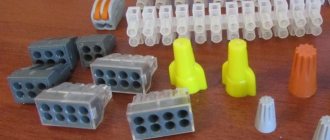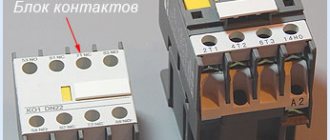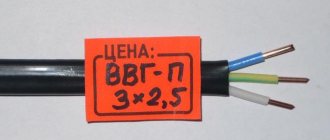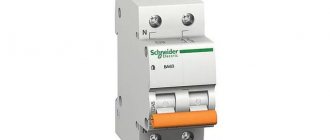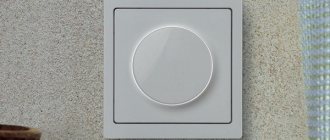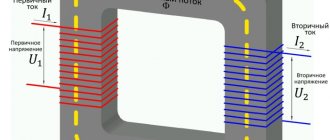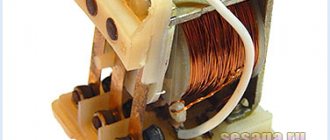The reliability of any electrical equipment directly depends on the condition of the electrical contacts of the equipment. Exposure to moisture, high temperature and other aggressive environments contributes to the destruction of components, causing current leakage, compromising the integrity of connections, which leads to device failure. To achieve stable operation of electrical equipment, it is necessary to prevent water and chemical elements from entering the contacts of the electrical circuit using special lubricants.
What is paste used for?
Back in the second half of the 20th century, scientists calculated that electricity losses in all areas of production amounted to up to 10% of total electricity consumption. This value increases as equipment ages and wiring wears out.
The simplest way to reduce losses to a minimum without serious financial costs was the use of special electrically conductive means. There is no need to repair equipment or replace wiring.
Electrical contacts have their own service life. And it contracts when the transition contact resistance changes. When exposed to electricity, the junction of the wires begins to heat up. This can even lead to fires. Statistics say that in 10% of cases, industrial accidents occur precisely because of the destruction of electrical network contacts. And destruction of this kind occurs precisely due to exceeding the limit of electrical resistance.
For the treatment of contacts, the standards provide for substances such as lithol, cyatim, and technical petroleum jelly. They all have a fat base. Due to this, such products melt and burn out, leaving the contact unprotected. As a replacement, conductive contact paste has recently been increasingly used.
Causes of oxidation
For what reasons do oxidation processes occur at the terminals?
Oxide deposits are a wake-up call for the car owner to take the necessary measures. It is important to understand the reasons for the occurrence of oxide before stripping the terminals and processing.
Causes:
- In the absence of tightness and insufficient contact of the tip with the battery, the electrolyte evaporates, which causes oxidation.
- Mechanical damage to the terminal - if chipped or scratched, it is better to replace it.
- Lack of tightness at the terminal outlet.
- Overcharging of the generator is often caused by a disruption in the operation of the voltage regulator.
- No weight on the engine.
General concept
Conductive paste allows you to increase the service life of electrical wiring contacts to seven years. It reduces by half the value of the transition resistance at the electrical contact points. This product works at temperatures up to 350-4000 degrees. In such conditions, it allows you to preserve all the functional features of contact connections.
There is a separate type of product called anti-corrosion conductive paste. In addition to the main tasks of reducing contact resistance, it protects contacts from moisture and aggressive environments.
Electrically conductive lubricants also perform an energy-saving function. Experts have calculated that using just 1 kg of the product can save up to 100 thousand kW of electricity per year.
Varieties
All means for electrical contacts are conventionally divided into two groups: conductors and dielectrics. The compositions of the first group do not interfere with the flow of current. They increase electrical conductivity and reduce circuit resistance. The thickeners contained in the mixture give it a matrix structure, so the substance does not spread. The cells contain particles of conductive material, which contribute to increased reliability of electrical systems and anti-corrosion protection, and reduce costs for equipment maintenance.
Mixtures of the second group have electrical insulating characteristics, i.e. They do not conduct current, so they cannot be used in places where contacts are in open contact. Substances are used to treat connections to form a protective layer that prevents current leakage and the entry of water, alkalis, acids and other elements into the unit that contaminate and destroy contacts. Lubricants are typically used to service metal, rubber and plastic parts, where they stabilize voltage and prevent short circuits.
Classification
Electrically conductive paste has two types. They differ from each other in the way they influence contacts:
- Passive (also called neutral) is a kind of prophylactic agent that will protect against oxidation of contacts under the influence of atmospheric oxygen. This group includes KVT contact conductive paste.
- Active does not affect the metal of the wires, but has an effect on oxidized areas located on the surface.
How to lubricate battery terminals
The process of lubrication of terminals consists of cleaning parts from oxidation products and then treating them with lubricants and is carried out in the following order:
- We remove the terminals.
- We remove oxidation products with a brush or felt soaked in soda solution. If the oxidation process started a long time ago, you will have to use terminal brushes.
- Rinse with distilled water.
- We tighten the terminals.
- Treat with the chosen product.
How to clean terminals
- Felt . They remove the layer of oxidation products. Resistant to acids, very convenient for removing oxidation products. It will also be useful if you protect the battery terminals from oxidation with felt washers impregnated with one or another lubricant. such devices as a toothbrush and a sponge for washing dishes : they will help if oxidative processes have just begun, or you are carrying out planned preventive measures.
- A weak soda solution . High-quality removal of oxides is the basis for the fact that you will not need to remove the white coating again soon. About 250 ml may be enough for you. solution: add about one and a half tablespoons of soda to distilled warm water of this volume.
- Sandpaper . It is recommended to use fine-grained sandpaper. Although it wears out quickly, it does not leave abrasive particles on the surfaces being treated.
- Brushes with metal bristles, produced by companies such as OSBORN ECO and so on. Their body is made of high-quality wood and has a hole for a handle.
- The brushes are a double-sided device, which makes the work much easier, and a drill will make it even quicker. When choosing, you can give preference to products from such manufacturers as Autoprofi, JTC (model 1261), Toptul (model JDBV3984), Force.
- Terminal cleaner . It can be worked by hand, but it is much easier than just sandpaper.
Terminal scraper
Metal brush
Often you need to carry out a more thorough cleaning, which will require a cordless drill with a stainless steel brush attachment.
Stripping of the terminals should be carried out at speeds no higher than 15,000/min. And under no circumstances increase the pressure! It may take longer to clean the terminals from oxides, but this is necessary.
Before purchasing the tools below, determine how advanced the terminal oxidation process is. If there is no plaque yet, or it has barely begun, mildly abrasive products will be enough for you, sometimes felt and soda solution are enough to prepare the parts for subsequent processing.
Causes, effects and elimination of terminal oxidation
In other, more serious cases, you should use highly effective products and tools that will not only remove traces of oxidative processes well, but will also save your effort and time.
Summarizing
Since the battery terminals are exposed to the harmful effects of electrolyte vapor and oxygen, and the resulting oxidation products negatively affect the operation of the battery, it must be protected from such influence. And the main question is how to do this, what to lubricate the battery terminals with? And the answer is quite obvious: a composition that could protect against moisture, was conductive and could eliminate stray currents. All these properties are present in the lubricants we are considering. You just need to apply them in advance, and not when the terminals are no longer visible behind a white coating.
>
Using the product
Conductive paste is easy to use. First of all, the surface on which the product will be applied must be degreased and dried.
Next, the pasta itself is prepared. As a rule, it consists of two components: powder with the addition of metal, liquid for diluting the powder. Therefore, the components need to be connected. This is done in a dry container. You can even do it on cardboard if the quantity is small. The consistency of the paste should resemble toothpaste.
When to lubricate battery terminals
It is necessary to smear the battery terminals not when a layer of white oxide has already appeared there, but preferably before installing the battery or at least at the very beginning of the oxidation process. On average, terminal maintenance measures are required every two years. On modern maintenance-free batteries that do not require so much attention, the need to lubricate the terminals may arise after 4 years of operation. Although, by and large, it all depends on environmental conditions, the condition of the electrical wiring and battery. Since damage to the terminals, poor contact, overcharging from the generator, violation of the seal of the housing and the ingress of technical fluids only contribute to the formation of plaque.
How to understand that the oxidation process has already begun
In order to check whether the oxidation process has already begun at the terminals, you will need to prepare a 10 percent soda solution. Add to 200 ml. container with plain water, one and a half to two tablespoons of soda, stir and moisten the terminal with it. If oxidation has begun, the solution will neutralize the remaining electrolyte. The process will be accompanied by the release of heat and boiling. So, it's time to put our advice into practice.
Oxidized car battery terminal
But an indirect sign of an ongoing oxidation process is:
- reduction of the on-board network voltage level when starting the engine;
- increased battery self-discharge.
So, if you notice these problems, then to eliminate them you will definitely have to clean and lubricate the battery terminals. But for this there is a certain sequence, rules and tools.
Making your own pasta
Conductive paste is commercially available in a wide range from various manufacturers. But you can also make it yourself.
The main component of the glue is synthetic resin. It does not conduct electricity in its pure form. Therefore, particles of metals - gold, copper, silver, nickel - are added to it. To ensure good electrical conductivity, the powder volume must be at least 70%.
Silver is most often used. This choice is based only on the economic side of the issue. The simplest and cheapest way to obtain it is through the chemical reaction of formaldehyde reduction. To do this, take one part of silver nitrate and one part of formaldehyde (1%). Their mixture is heated to a temperature of 80 degrees. After this, ammonia (5%) is added there. As a result of the reaction, a dark-colored silver precipitate will fall to the bottom. This precipitate is filtered, washed and dried.
When all the ingredients are ready, you can prepare the pasta. To do this, combine 100 grams of epoxy resin, 250 grams of silver powder, 10 grams of dibutyl flate (to give the resin a more liquid consistency). Before use, add 10 grams of polyethylene polyamine as a hardener. Without it, the mixture can be stored indefinitely.
You can increase the electrical conductivity of the paste if you dry it after application at elevated temperatures (up to 100 degrees).
Electrically conductive substances are chemical substances that must be handled in compliance with basic safety rules. The paste should not come into contact with the skin and mucous membranes. If this happens, wash thoroughly with warm water and soap.
Electrical contacts in a car naturally create an unfavorable environment. Even though car connectors have rubber seals in the housing, moisture still gets inside.
Even copper-containing contacts are susceptible to corrosion. This does not mean that the metal petal can be mechanically destroyed. However, a thin layer of oxides forms on the working surfaces, the resistance of which is much higher than that of metal.
As a result, a failure occurs in the transmission of the control signal, or even worse: the power lines begin to spark at the point of contact, which leads to burning of the petals. Minimal losses - the device stops working. In the most advanced cases, a fire may occur.
Car electrical equipment maintenance
Moreover, in our time this procedure is even more important than before. This is due to two reasons:
- cars have become literally crammed with electronics
- application of engine control systems
Well, the first reason is clear - the more wires, the more possible problems.
Why does the engine control system require increased attention?
This is due to the use of lower voltage in the engine control system wiring and the use of pulse signals.
The thing is that the higher the voltage, the lower the losses.
What do we get? Previously, only 12V or, on some, 24V was used in the electrical equipment of cars. And now the ECU operates mainly with a voltage of only 5V, and some sensors even with millivolts.
Ignition systems have become more powerful and are no longer controlled by the banal closing/opening of contacts, but by pulses of a certain duration set by the control unit.
All these low-current circuits must always have minimal and constant resistance, and they operate in constant temperature changes among the oily and dusty air under the hood. Condensation, puddles on the roads, constant vibration and corrosion inevitably make adjustments to the operation of the system.
I can say with confidence that the lion's share of all problems in the engine management system are related to the condition of the wiring.
And the weakest link in this chain is all kinds of contacts and connecting blocks.
What is conductive contact grease?
In fact, it is an ordinary component substance of plastic consistency, with special additives. Mineral oil is used as a base.
To increase the viscosity, an additive is added: it can be ethylcellulose, which contains salts of high molecular weight compounds (essentially the same soap).
Sometimes higher organic acids are added. A stabilizing component must be introduced: an acetone solution of benzotriazole.
But this contact lubricant is not electrically conductive. It simply protects the connector from corrosion. Therefore, highly dispersed (finely ground) copper powder is added to the plastic mass.
It has a characteristic color and is actually a conductor of electricity. The principle of operation is simple: when applied correctly, the conductive contact grease fills all the microvoids in the connection and expands the interaction spot.
Since the composition is plastic, the connections do not break during vibration, and the electric current flows without interruption. In addition, protection against corrosion is provided at the application site.
Another option: graphite-based automotive electrical conductive contact lubricant. The composition of the base is similar, mineral oil with the addition of stabilizers and thickeners.
Only finely ground graphite is used as a conductive medium. The electrical conductivity of the material is almost as good as that of a copper additive, but the cost of such a lubricant is significantly lower. It doesn’t look as aesthetically pleasing, but it’s not a decorative element.
Just like copper, graphite paste not only provides reliable contact, but also protects against moisture penetration and corrosion when in contact with air.
Scope of application
The compositions are considered universal, since they are used in connections of any industrial equipment, vehicles, etc., where the following electrical contacts are present:
- detachable - bolted and screw;
- one-piece - for welding, soldering, riveting;
- sliding – LATR type transformers, rheostats;
- switching – parts of switching units.
The mixtures are also used for processing electrical dismountable connections, collapsible type contacts, cutting knives, as well as twisted or crimped assemblies. The materials provide sealing and protection of terminal connections of batteries and high-voltage wires of vehicles. They protect the contacts of sensors of plugs, relays, sockets, and guarantee electrical insulation.
Advantages and disadvantages of conductive compounds
- We have already looked at the strengths. Protection from external influences, reliable contact during vibration, easier opening of the connector (electrical conductivity has nothing to do with it, in any case it’s a lubricant). Another advantage is that the conductive paste in some cases can act as a separating layer between dissimilar metals. For example, when copper and aluminum are directly connected, an electrochemical reaction occurs and the metals rapidly corrode. A layer of paste reduces the negative impact. Application of lubricant for electrical contacts
- The disadvantages include the possibility of short circuiting. If the connector is tight enough, the paste may short out nearby contacts. It is clear that at high current values, the lubricant will simply evaporate: but a fire may also occur. In this case, a fuse will help. And if you close the low-current signal contacts, then in the best case, the electronic modules will not execute commands, and in the worst case, the element base will fail.
"Oldfather's way"
In addition to grease and petroleum jelly, very old methods of protecting terminals include treating with oil to impregnate felt. It's cheap and accessible. Garage workers still use this method, but it poses a fire hazard.
If you decide to try it, then cut out felt circles with a hole inside, soak them in oil, thread them through the terminal, screw the terminal, and place a felt circle soaked in oil on top of it.
The lubricants described above have a protective effect on the terminals, and before applying them, the deposits are first cleaned off to improve contact.
General rules for applying lubricant to contacts
- the cavities inside the connector should be cleaned of dust, moisture, and dried;
- If possible, the male contacts should be cleaned with fine sandpaper and sawdust should be removed;
- female type contacts are cleaned with a file, a needle, or a narrow strip of sandpaper.
The metal parts are then coated with a thin layer of lubricant. If the paste is not conductive, you can apply it to all internal surfaces for 100% protection against moisture penetration. External contacts (such as battery terminals) are also coated on the outside.
Of course, the lubricant does not last forever; it must be washed off and reapplied at least once a year.
Premium quality insulating tape 3M Scotch™ Super 88
It is a high-quality polyvinyl chloride insulating tape with a thickness of 0.22 mm, suitable for use in any environmental conditions. The tape is intended for continuous use at ambient temperatures up to +105°C. Scotch™ Super 88 is highly resistant to abrasion, moisture, alkalis, acids, corrosion and changing environmental conditions (including exposure to ultraviolet radiation). Operating temperature from minus 40 to plus 105 ° C. Its properties are reminiscent of native Toyota electrical tape, anyone who has unwound it knows how difficult it is to wash your hands of it :) The only downside is perhaps the price.
For poking around in the pref block, KVT PK-16 press pliers were purchased for crimping non-insulated tips and sleeves
Conductive paste KVT
Provides long-term protection of the electrical contact from various physical and chemical processes occurring during operation, reduces the electrical resistance of the contact, increases the contact surface, stabilizes the temperature regime of the contact connection, and when using conductive contact paste, it becomes possible to use an aluminum tip on a copper cable. Increases the service life of electrical contacts and reduces labor costs for repairs and maintenance of electrical networks. Ingredients: mineral oil, thickeners, electrically conductive composition. Operating temperature: -40 to +100° C.
To bring beauty under the hood, IPROTEX braid was purchased
. She's snakeskin.
Designed to separate cable bundles inside switchboard equipment. Provides protection against chafing and side cuts. Resistant to gasoline, oils, antifreeze. Operating temperature: from -55 to +150 °C. Material: polyester. Black color. Manufacturer: IPROTEX Germany.
Characteristics
- thermal and frost resistance – pour point not lower than -57˚С, maximum operating temperature – 400˚С;
- not susceptible to leaching, alkaline and acidic compounds;
- anti-corrosion properties;
- protection of nodes from short circuit:
- insulation and sealing of conductive components;
- compatibility with elastomers and plastics;
- non-toxic;
- minimal volatility;
- increasing the electrical properties of the treated area.
